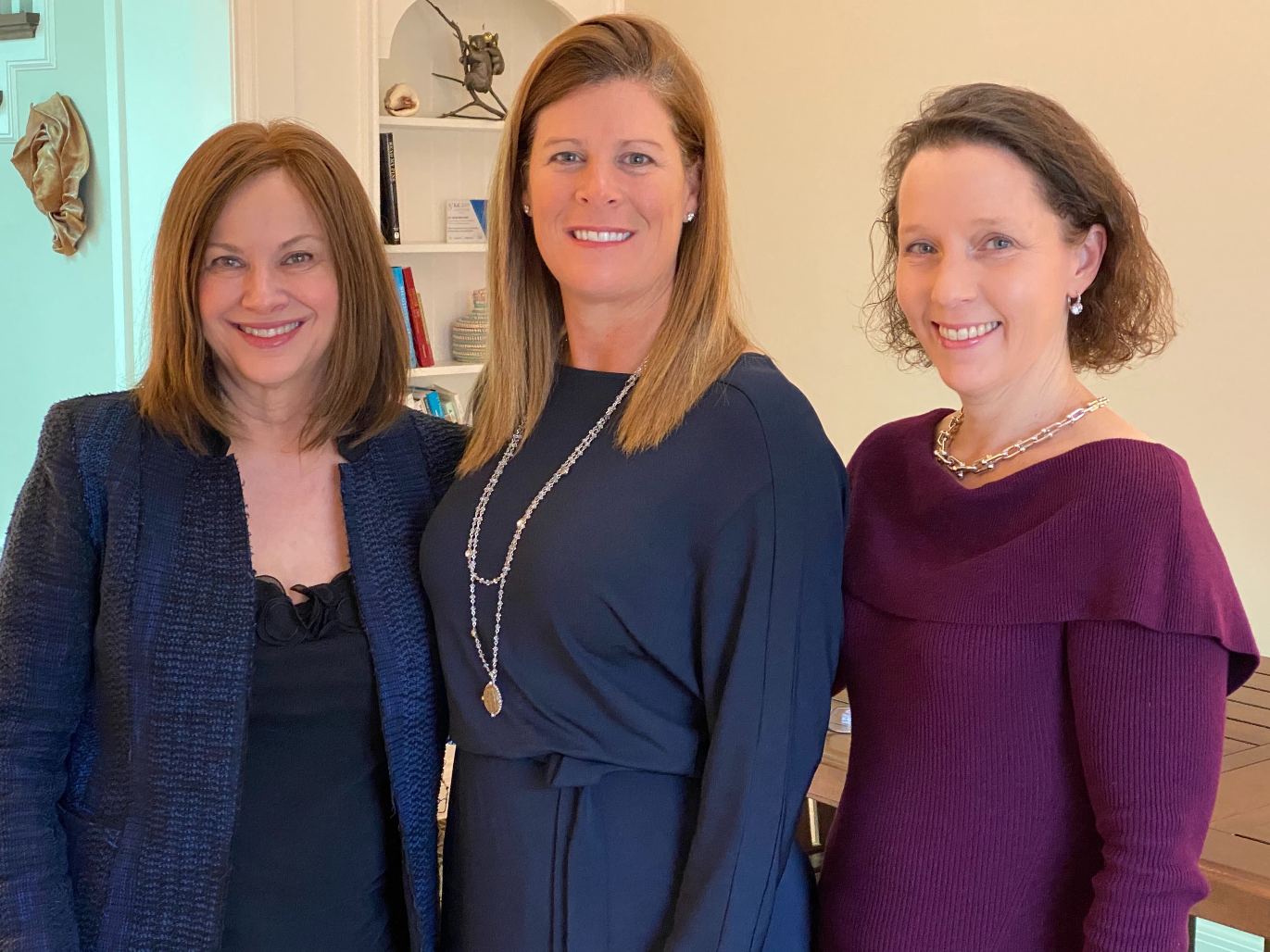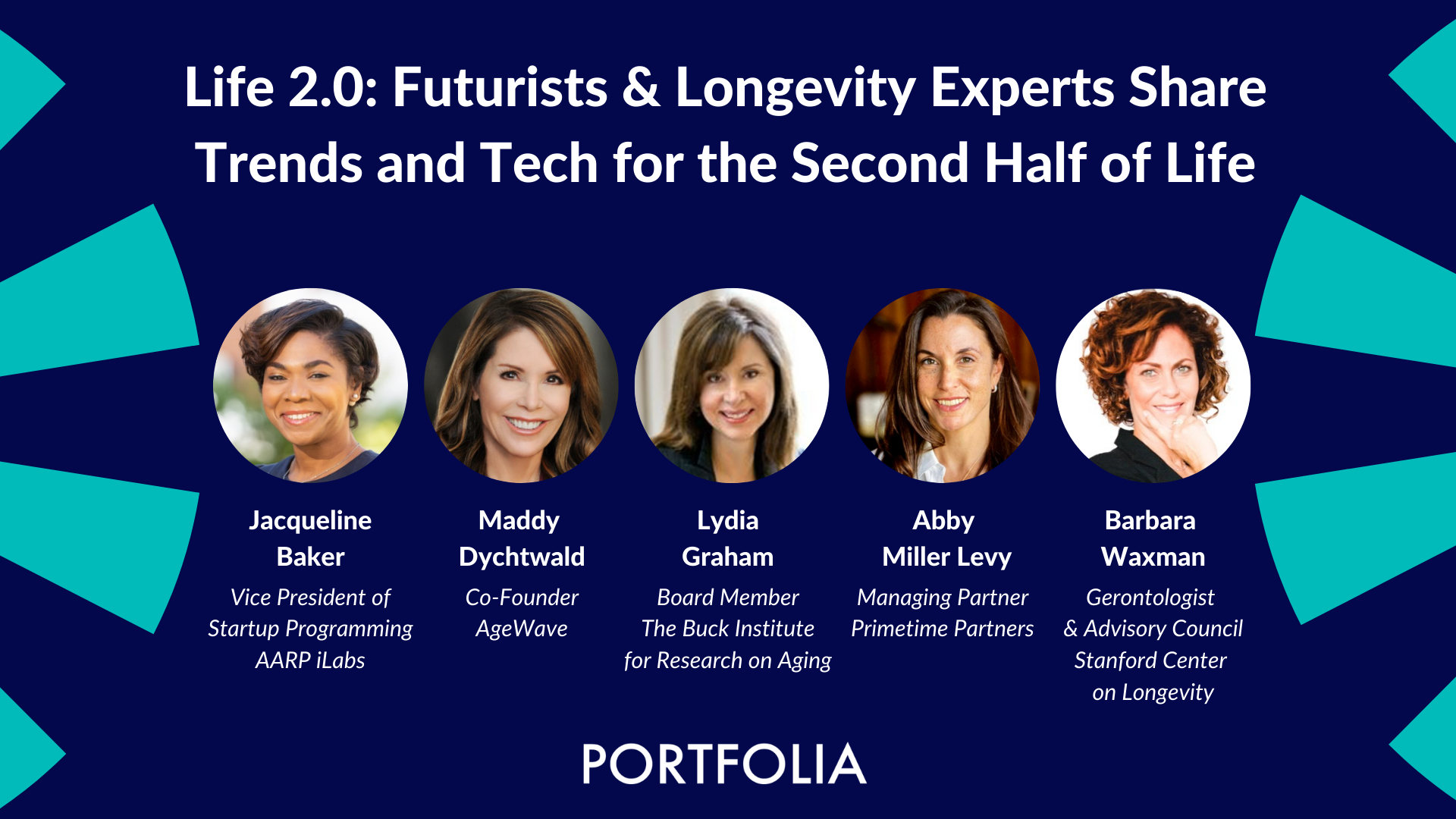Five Takeaways for the Future
RECENTLY, WE HAVE BEEN HEARING A LOT OF AGEIST references in the news about protecting “Grandpa” and “Grandma,” as if those two words fairly represented the entire cohort of adults over 50. Unwittingly, it conjures up images of the iconic rocking chair and people living almost exclusively for their grandchildren.

The Portfolia Team (left to right)Trish Costello, Founder and CEO, Chantell Preston, Lead Partner, Active Aging & Longevity Fund; Marcia Dawood, Portfolia Funds Investor
While older adults can be more vulnerable to illness due to preexisting conditions, cumulative lifestyle choices, unlucky genetics, and the impact of immunosenescence (the aging of the immune system which, by the way, is not always synonymous with chronology), overstating aging so simplistically is an outdated paradigm.
Although we still grapple with finding new models to replace old ones, what we do know is that today’s modern elders are far from homogenous. They are increasingly fiercely individualistic and remain vital and important contributors to society and even the economy-at-large well into their later years.
Recently, I participated on a panel, “Life 2.0: Trends and Tech for the Second Half of Life,” presented by Portfolia (www.portfolia.com) and tied to their new Active Aging & Longevity Fund (full disclosure: I am a small investor). Kudos to Portfolia and others (like Primetime Partners and AARP Innovation Labs) for directing investment into a sector that will help us all live better as we age.
Before sharing my five takeaways from the Portfolia panel, let us first consider some context. According to research conducted by McKinsey Global Institute, “those over 60 are reshaping markets and generating just over half of all urban consumption growth in developing countries.” The Longevity Economy® Report, a joint report by Oxford Economics and AARP (the AARP report) noted “adults 60+ dominated spending in 119 of 123 consumer packaged goods product categories and those 50+ own 83% of the wealth in the U.S. with 109 million Americans now over 50.”
Obviously, this cohort is not fading into the background quietly or aging the way their parents did.
ACTIVE AGING IS BEING REDEFINED
Further in the AARP report it states, “The Longevity Economy is upending conventional wisdom about how aging affects the overall US economy, and the country. Rather than lengthening extreme old age, the 30 years added to lifespans in the 20th century have resulted in a longer middle age—extending the period when workers are at their most productive and creative, and representing a major, often untapped resource.”
“The gift of the 21st century is that chronology no longer defines us. The narrative around aging needs to change from age to stage,” believes Barbara Waxman, gerontologist and advisory council member for the Stanford Center on Longevity and author of The Middlescence Manifesto. “Middlescence is a transitional period, between the ages of approximately 45 and 65, created by longevity patterns of the 21st century. Like adolescence, a term popularized by psychologist Stanley Hall, it is often accompanied by physical, emotional, social, and economic changes and marked by an increased desire to find or create greater meaning in one’s life.”
Of those 65-plus, 20 percent continue to work, and 75 percent describe themselves as being in “good” to “excellent” health. Given their significant wealth and health, these older adults want more from life in their third chapter. Companies and organizations poised to innovate and really listen to this audience can benefit from substantial opportunities for products and services that meet their needs.
And this market is not going away. Quite the contrary, it will continue to expand. According to the AARP report, by 2050, “The 50-plus population (would represent) four generations (from the GI generation to Generation X) and by 2031, will (expand to) include millions of Millennials. Generation Z will join the 50-plus cohort in 2047.” As these generations mature, they will demand a reimagined aging experience.
HOW WE PHYSICALLY AGE IS CHANGING
When asked about my passion for healthy longevity, I often must clarify I am not advocating anti-aging. We all age, but healthy longevity is about slowing and minimizing the negative impacts of aging to increase healthspan or the healthy active years of life. While paying attention to one’s health early is best, it is never too late to start making impactful changes. Our physical health is the foundation for aging successfully.
There is no one-size-fits-all for navigating lifestyle choices as we age: our bodies, too, are individually different. Advances in personalized medicine or P3Medicine (precision, personalization, and prevention) will play a huge role to help us navigate our well-being in the coming years. Expect to see more personalization and innovation in lifestyle wellness and nutritional management, such as functional foods.
One area—predictive biomarkers of aging (which the Buck Institute is currently identifying and researching)—will enable us to determine as early as our thirties our risk for age-related diseases, so we can delay or prevent future health challenges. This is a huge area for scientific discovery. A wealth of information derived from genetic and biological testing will help us forecast our personal health needs more accurately so we can plan. For example, more advanced markers for inflammaging (the chronic inflammation that increases with age and that is at the root of so many chronic diseases) will surface, giving us everything from better diagnostics to therapeutics to lifestyle interventions to curtail, manage, and offset the escalation of inflammation as we age.
DISCOVER YOUR “FOUNTAIN OF USEFUL”
“New data from sociologists tell us that feeling useful is a good way to stay youthful,” says Maddy Dychtwald, co-founder of Age Wave. “It’s not just the factors we’ve always considered (health and aging-in-place solutions), but things like having a sense of purpose and social engagement. It is a time for reinvention and new beginnings. The idea that, as you get older, you become an even better version of yourself may have been a cliché in the past: it’s the reality today.”
MORE CHOICES AVAILABLE
“The existing norms no longer work because they evolved for lives that were half as long. The traditional 3-stage life course—education, work and family, (and then) retirement—is outdated. A new life course is needed that is more flexible and has multiple stages,” the Stanford Longevity Center emphatically states in its efforts to create a New Map of Life™.
“There’s no one definition anymore of what it means to be an older adult,” shared Abby Levy, Managing Partner, Primetime Partners. “There are people who are 70 and 80, who are selecting myriad different life paths. Some are working longer and starting businesses, having third careers. There’s a lot more choice, and technology plays a big role in accelerating those choices. Tech will put older adults at the center of the design process.”
TACKLING DISPARITIES IN AGING
Jacqueline Baker, in her role as VP of Startup Programming at AARP Innovation Labs, examines disparities in our current landscape and how to address them. She called attention to the need to identify: “What are the gaps—health gaps and wealth gaps—that exist for this cohort and how can we tackle them directly?” At AARP, she evaluates promising startups helping people age in the ways they want, as innovations today will shape outcomes across populations five to 10 years from now and beyond.
CONCLUSION
While some might say there is a longevity revolution, I think of it more as a longevity evolution. If you are feeling a bit sanguine about growing another year older as we begin 2021, chin up. Your next chapter could just be your most exciting.
Investing in the future of aging has the potential to make not only your world a bit brighter, but that of future generations, too. And that’s a pretty good return on investment.

